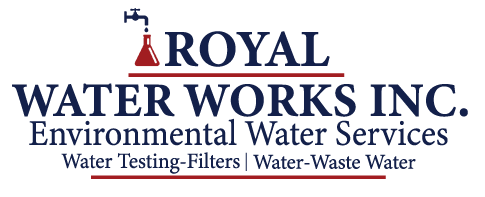Understanding Different Types of Water Contaminants and How Water Filtration Systems Can Help
Understanding Different Types of Water Contaminants and How Water Filtration Systems Can Help
Clean and safe drinking water is essential for our health and well-being. However, water from various sources can contain contaminants that pose risks to our health. Water filtration systems play a crucial role in removing these contaminants, ensuring that we have access to clean and healthy drinking water. In this blog post, we will explore different types of water contaminants and discuss how water filtration systems can help us maintain a safe and reliable water supply.
Understanding Water Contaminants
Water contaminants can be broadly categorized into four main types: biological, chemical, physical, and radiological.
1. Biological Contaminants
Biological contaminants include bacteria, viruses, parasites, and other microorganisms that are harmful to human health. These contaminants can cause various waterborne illnesses such as diarrhea, cholera, and typhoid fever. Common biological contaminants found in water sources include E. coli, salmonella, Giardia, and Cryptosporidium.
2. Chemical Contaminants
Chemical contaminants in water can originate from both natural and human-made sources. They can include heavy metals like lead and mercury, industrial chemicals, pesticides, pharmaceuticals, and disinfection byproducts. Exposure to these chemical contaminants can lead to adverse health effects, including organ damage, developmental issues, and an increased risk of certain cancers.
3. Physical Contaminants
Physical contaminants refer to visible particles or substances that can be present in water. These contaminants can include sediment, silt, sand, rust, and other debris. Although physical contaminants may not directly cause health issues, their presence can affect the taste, odor, and clarity of the water.
4. Radiological Contaminants
Radiological contaminants are substances that emit radiation, such as radioactive isotopes of radium, uranium, and radon gas. While these contaminants are less common, they can pose significant health risks, including an increased risk of cancer.
How Water Filtration Systems Help
Water filtration systems are designed to remove or reduce different types of contaminants from water, ensuring it is safe for consumption. Here are some common water filtration systems and how they help in purifying water:
1. Carbon Filters
Carbon filters, also known as activated carbon filters or charcoal filters, are effective in removing chemical contaminants, including chlorine, pesticides, and industrial chemicals. They work by adsorption, where the contaminants stick to the porous surface of the activated carbon. Carbon filters also help improve the taste and odor of water.
2. Reverse Osmosis Systems
Reverse osmosis (RO) systems use a semi-permeable membrane to remove a wide range of contaminants, including biological, chemical, and physical contaminants. The RO membrane allows water molecules to pass through while blocking contaminants such as bacteria, viruses, heavy metals, and dissolved solids. Reverse osmosis systems provide a highly efficient method of water purification.
3. Ultraviolet (UV) Filters
UV filters use ultraviolet light to kill or inactivate biological contaminants, including bacteria, viruses, and parasites. The UV light disrupts the DNA of microorganisms, rendering them unable to reproduce and cause harm. UV filters are often used in conjunction with other water filtration systems to provide comprehensive purification.
4. Ion Exchange Systems
Ion exchange systems use a resin to remove dissolved contaminants from water, specifically targeting heavy metals like lead, mercury, and copper. The resin exchanges ions, replacing harmful ions with less harmful ones. Ion exchange systems are commonly used in households with a high risk of heavy metal contamination.
5. Ceramic Filters
Ceramic filters are effective in removing physical contaminants, including sediment, bacteria, and larger particles. The small pores in the ceramic filter trap these contaminants while allowing clean water to pass through. Ceramic filters are often used in combination with other filtration methods to achieve comprehensive purification.
Conclusion
Water contamination is a serious issue that can jeopardize our health and well-being. Understanding the different types of water contaminants is essential in ensuring our water supply is safe and clean. Water filtration systems, such as carbon filters, reverse osmosis systems, UV filters, ion exchange systems, and ceramic filters, play a vital role in removing these contaminants and providing us with access to quality drinking water. By investing in a reliable water filtration system, we can protect ourselves and our families from the harmful effects of waterborne contaminants.
Got questions about what water filtration system would work best for your property? Let us help! Contact us today to learn more about what we can do for you!
Categorised in: Water Filtration System
